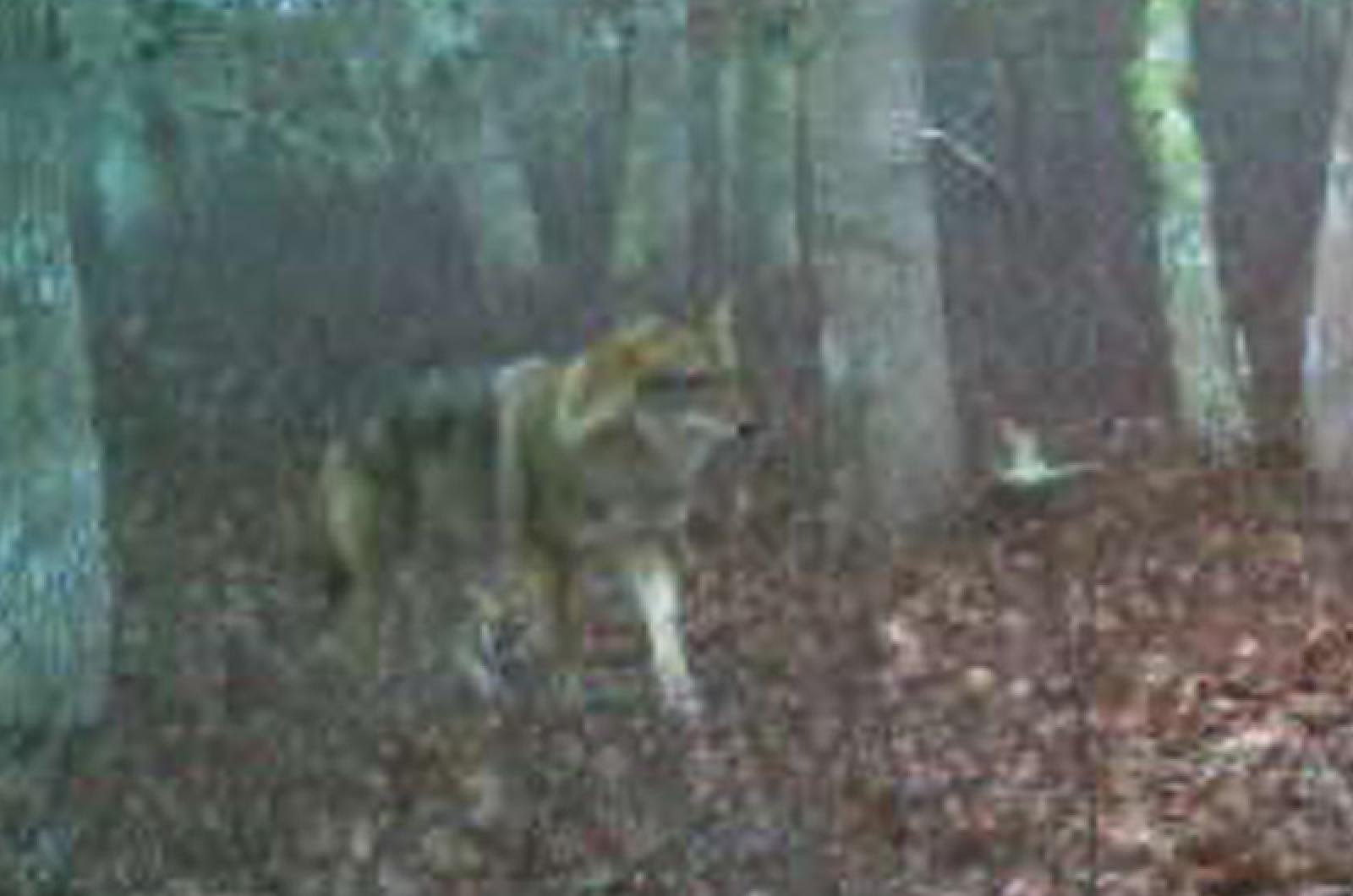Nantucket now stands alone. Until this year Nantucket and Martha’s Vineyard were thought to be the last holdouts for coyotes. While these creatures have made their way across much of the eastern United States, including Massachusetts and points north, coyotes have been slower to infiltrate the Islands. Islands, though, are not immune to coyote range expansion, and could not hold back these powerful canids forever. With trail cam images confirmed by experts, we now have proof of coyote presence on Martha’s Vineyard, at least one and maybe more. A coyote image was confirmed in May in Edgartown and last week another image was confirmed in Oak Bluffs, near the state forest.
For many years, there have been sightings, rumors and stories of seeing and hearing coyotes. Deceased ones washed up on Island shores in 1996, 2004, and 2014, so it seemed it was only a matter of time before a live coyote made it successfully to the Vineyard.
Writing for the New York Times in 1997, columnist Nelson Bryant described the coyote’s persistence: “Rivers do not deter it, nor does a racing tidal gut. It has swum from the mainland to Massachusetts’ Elizabeth Islands, where it is firmly established. Massachusetts’ more distant islands of Martha’s Vineyard and Nantucket are still without coyotes, as is Long Island.”
And he was right to suspect it wouldn’t last. “That may not be true for long, however,” he wrote in the same column. “This past summer, there was a report of a drowned coyote being washed up on the north shore of the Vineyard, which is directly across Vineyard Sound from the Elizabeth Islands.” The new sighting and its implications have been the talk of the town. The newcomers are not especially welcome by many, so Nantucketers won’t likely be jealous of our most recent washashores. The damage to livestock, breeding shorebirds and their nests, and other issues have been well documented elsewhere. What will happen will depend on the number of animals and, if more than one, if they successfully breed.
Other islands could be used for comparison. Observations from farmers on Naushon show that the first year that coyotes arrived, approximately 30 of their sheep were likely killed by this newly arrived predator.
Coyotes are opportunistic feeders, as they will eat whatever is available and easy to find. They are not picky. They eat both plants (fruits and berries) and animals. Insects, rabbits, rodents, birds, reptiles and deer (fawns more likely) can be on their menu. Carrion is fine too, and coyotes will eat food previously killed or injured. The real-life coyote doesn’t mirror its cartoon lookalike Wile E Coyote, American author Doug Fine noted, describing the coyote and its method of killing, “sleek, fast, healthy and apparently without an anvil or Acme product of any kind.”
For those concerned, there are ways to deter these animals from your yard and neighborhood, mainly by reducing food that might encourage a hungry coyote to hang around. Secure your trash, feed your pets indoors and don’t leave any foodstuff outside. Coyotes are smart and will remember where to find easy eats, so advise your neighbors to do the same.
Some practices to protect yourself and your pets — keep cats indoors (for their safety and the safety of other wildlife), and leash your dogs, especially the smaller varieties. When at home, keep pets in an enclosure such as a fence if you leave them unattended. On walks, keep a whistle, airhorn or water gun if you are worried about an encounter on the trail.
We don’t know if this latest sighting will lead to a viable population on the Island. Coyotes breed in February and can expect anywhere from two to 10 pups in April. Only time will tell if and how this newcomer changes the Island.
Suzan Bellincampi is director of the Felix Neck Wildlife Sanctuary in Edgartown, and author of Martha’s Vineyard: A Field Guide to Island Nature and The Nature of Martha’s Vineyard.




Comments
Comment policy »